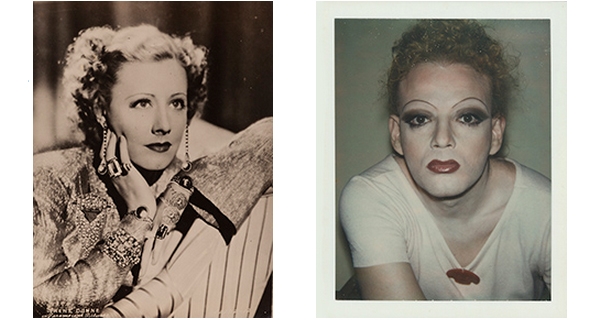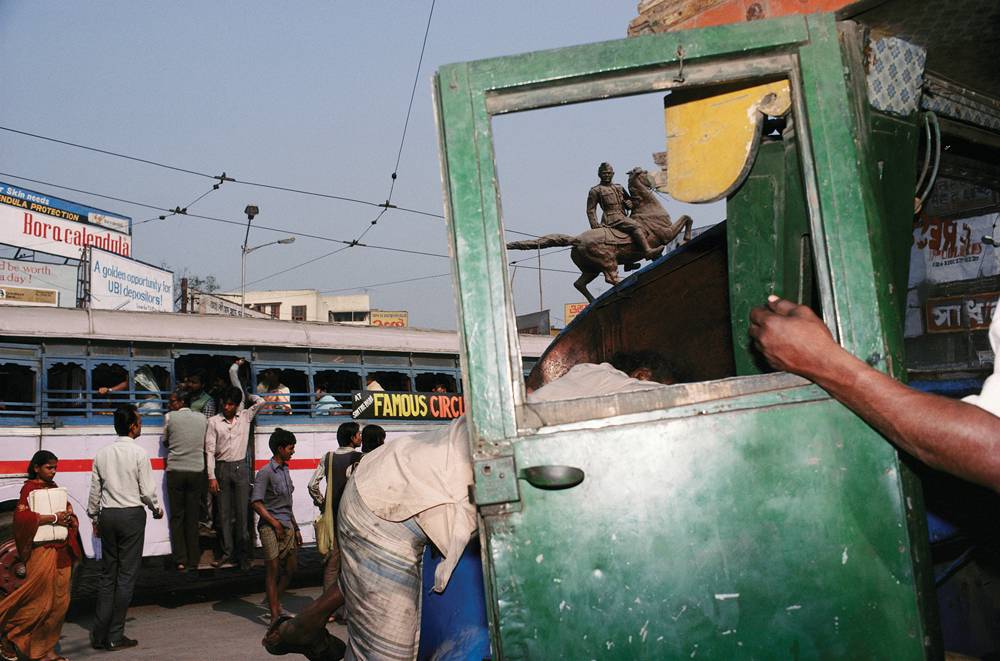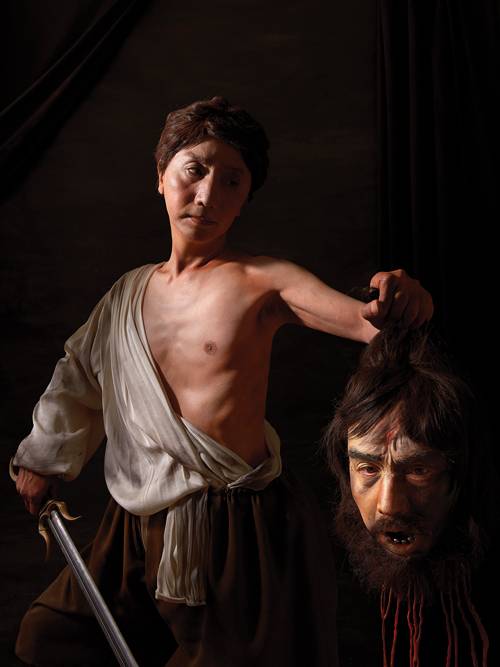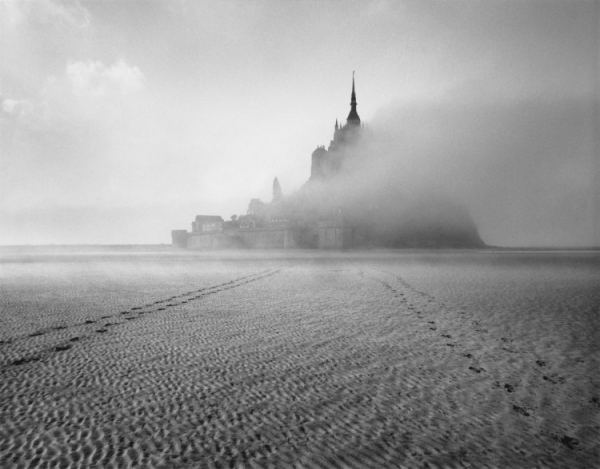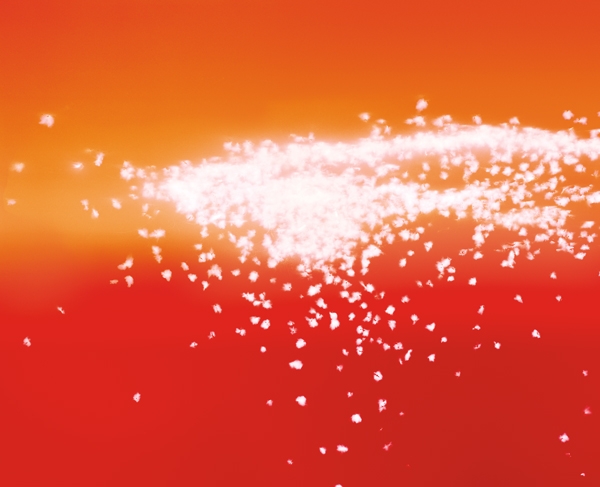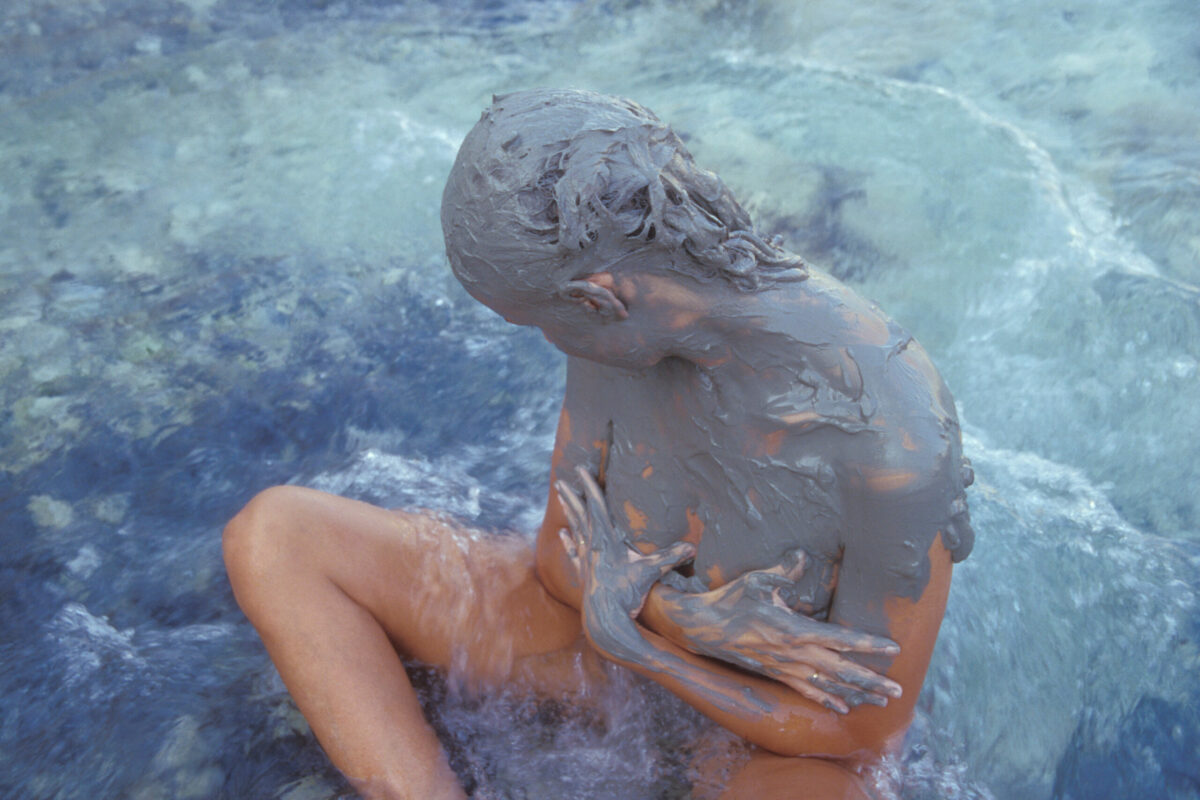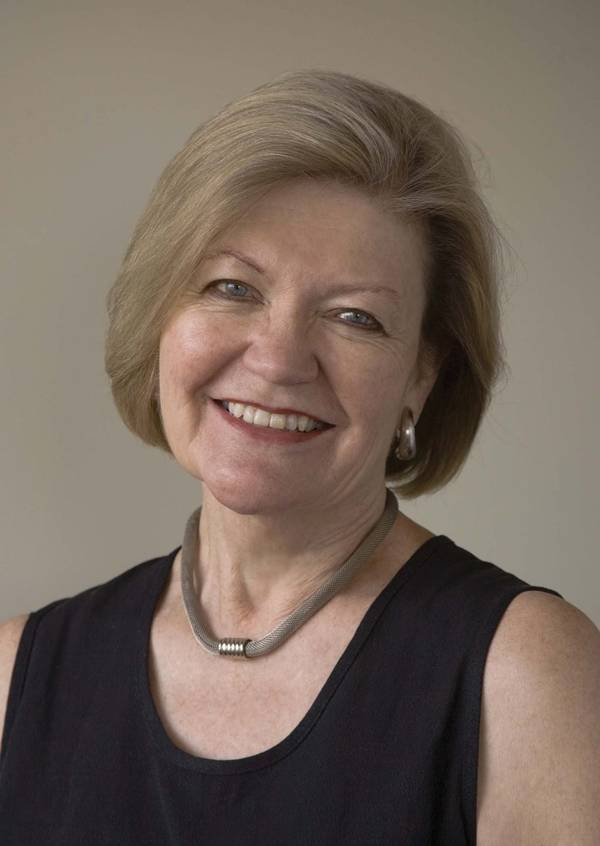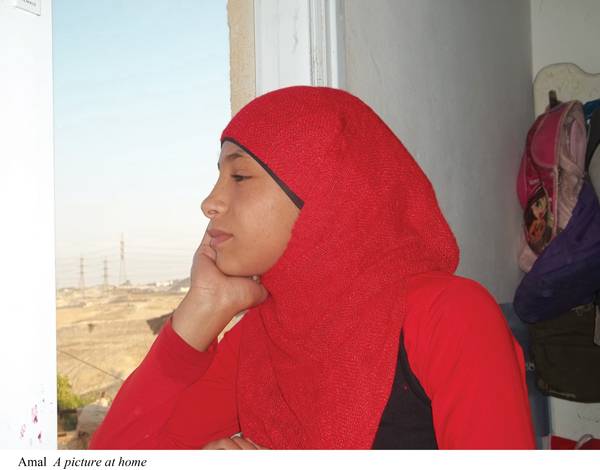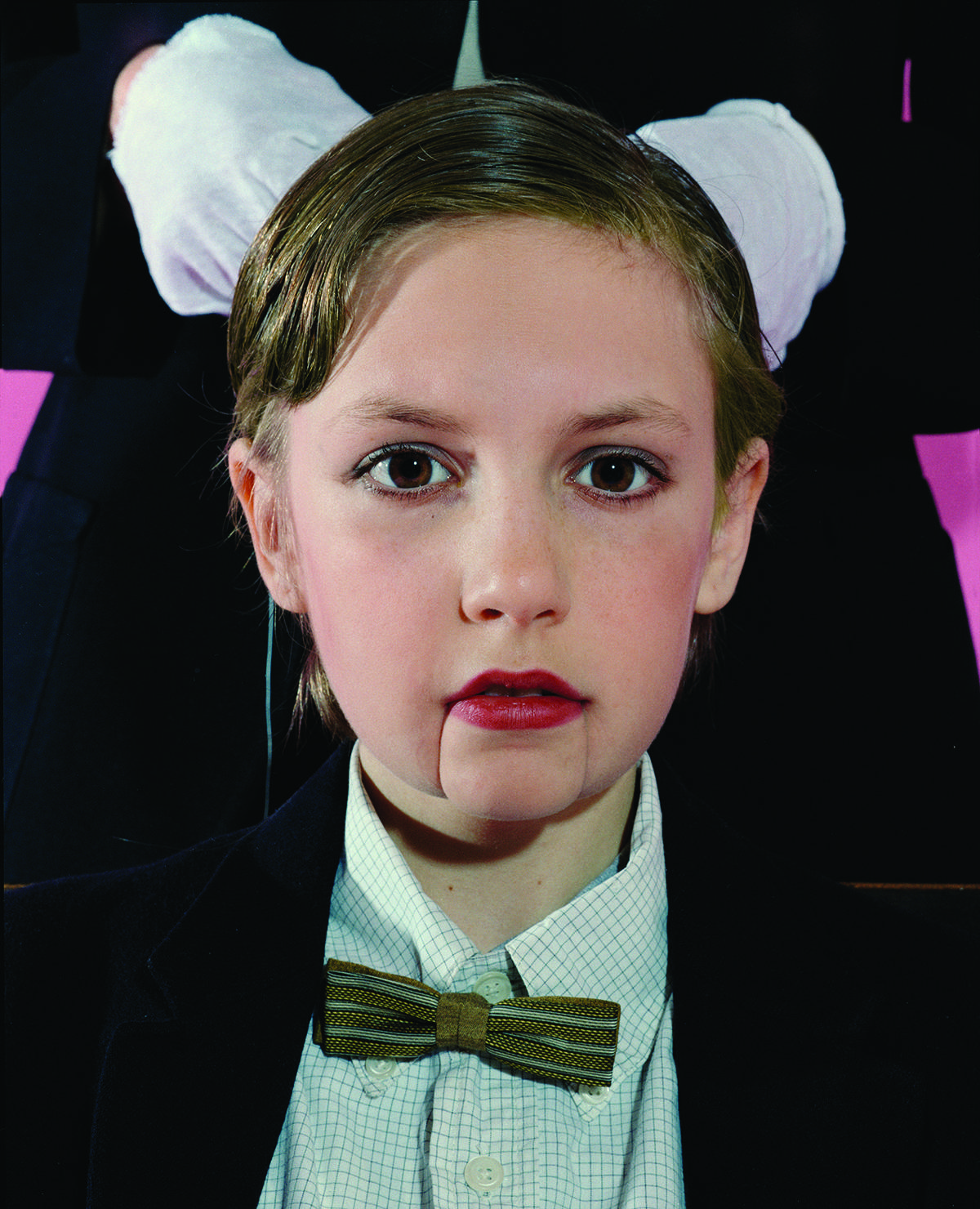

Lena Dunham launched her podcast the Women of the Hour, where she talks with women she admires about things like sex and friendship, almost two weeks before Aura Rosenberg’s exhibition opened at Meliksetian Briggs in West Hollywood. So before seeing the show, which includes a portrait of Dunham as a ten year old, I had heard the writer-filmmaker-actress talk to her gynecologist and others in the podcast teaser. Yet looking at Dunham’s ten-year-old face wasn’t like looking at the child version of the woman who would grow up to make a popular HBO show and then become a cultural powerhouse; I felt I was looking at an already intriguing person as capable as she’d ever be. Few of Rosenberg’s subjects read as “children” per se, even though that’s what they are.
Called Who Am I? What Am I? Where Am I?, Rosenberg’s current show features the series the photographer began in the 1990s, in which she asked known artists to paint the faces of children and then photographed those children. She began it after watching her daughter’s teacher face-paint a group of kids and seeing how the children became casually complicit vessels of their teacher’s aesthetic. The photographs tend to be quite straightforward, adhering to the conventions of portrait taking – sometimes there are gray backgrounds; often the subjects look into the camera.
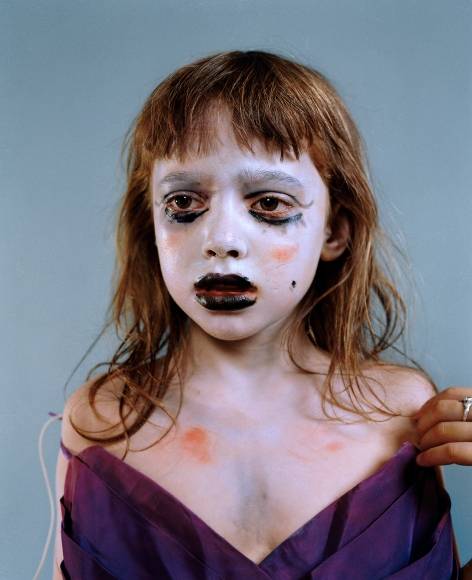

For the Dunham portrait, taken in 1996, Dunham’s mother, artist Laurie Simmons, made her daughter look like a marionette puppet, the gloved hands of a puppet master visible in the background. John Baldessari made a mask of Rosenberg’s daughter Carmen’s face, which the girl held upside down so her lips were on her forehead. In the past, Rosenberg has presented these photos at smaller scale – the first time I saw one, it appeared in a standard 40×30 inch size. At Meliksitian Briggs, the images, unframed and on matte cotton paper, are printed larger than life. Not all of them are equally good – the quote bubble Christopher Williams put above the head of a baby named Bram makes the project feel like a cute game in which baby can’t have much agency. But the ones that are good portray the children as aware participants, playing along with a process they didn’t invent but understand, asserting themselves in the ways that they can. When the late Mike Kelley painted the face of Rosenberg’s daughter, he made the girl look like an underage goth, with black lipstick and dark circles under her eyes. Her expression, though, is what makes the picture: it’s melancholy, maybe a bit resentful and very self-possessed.

